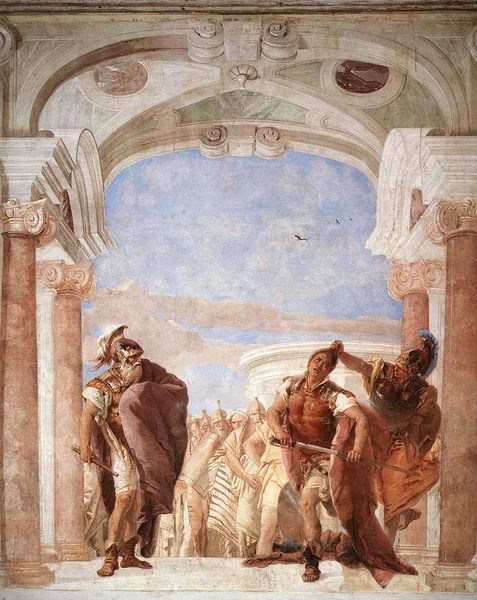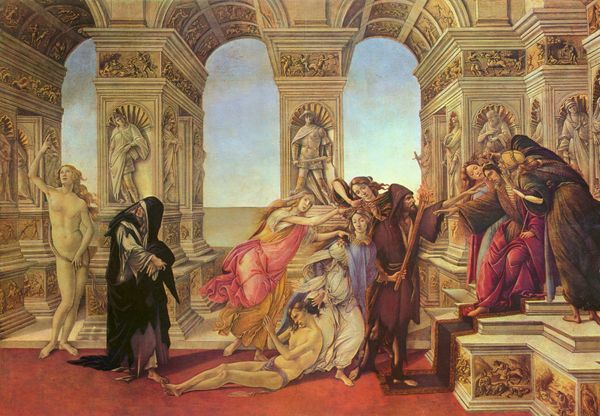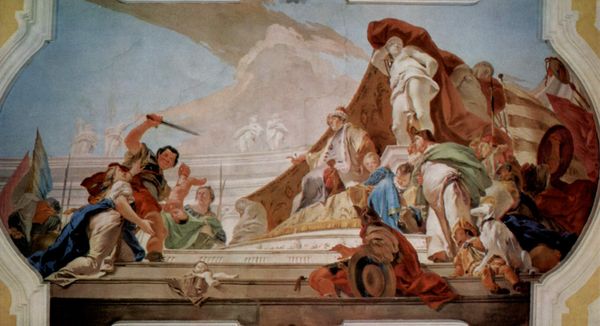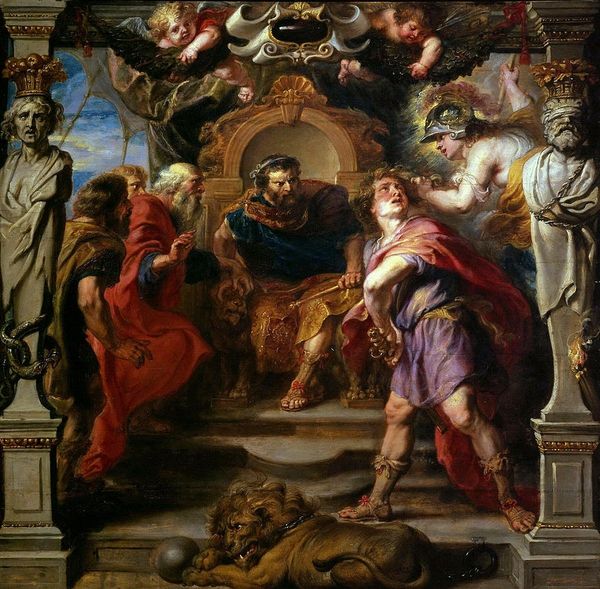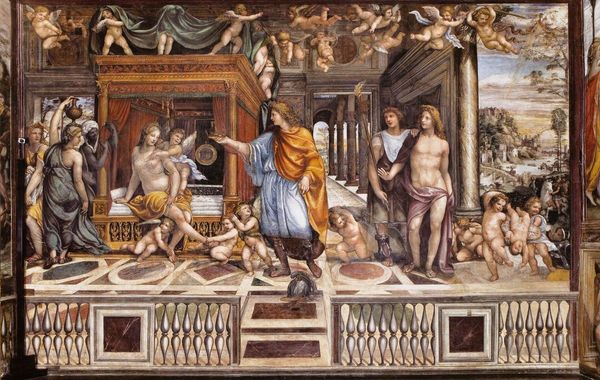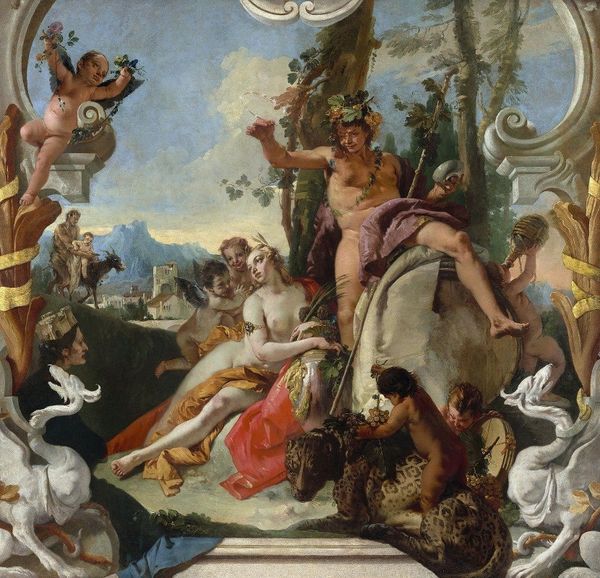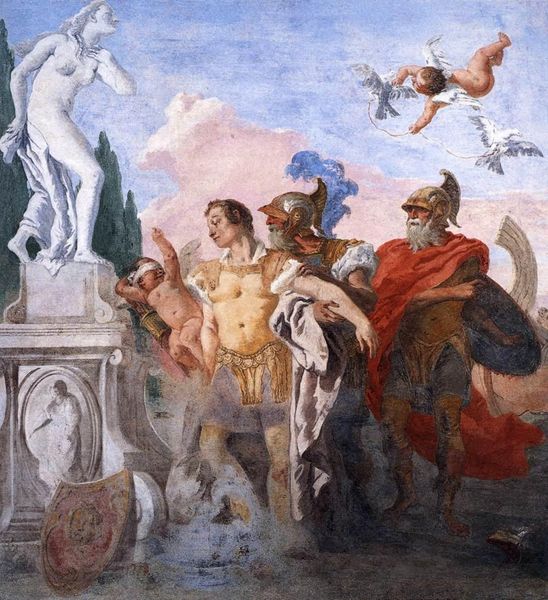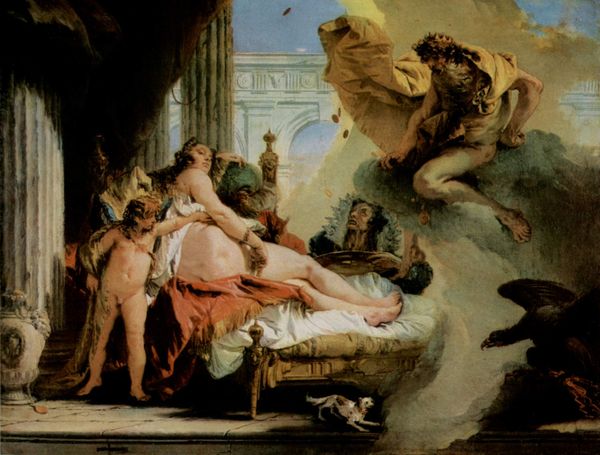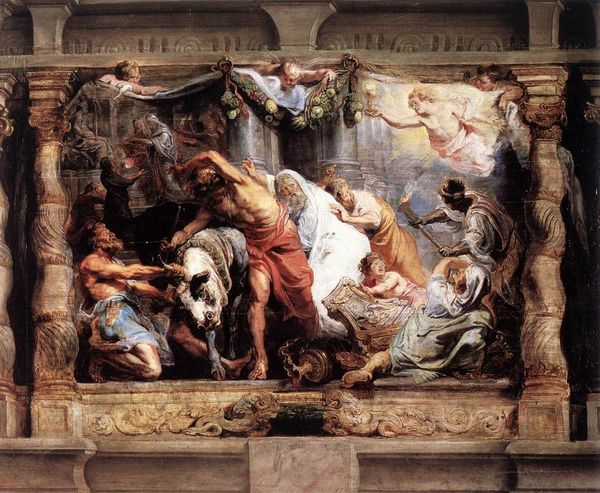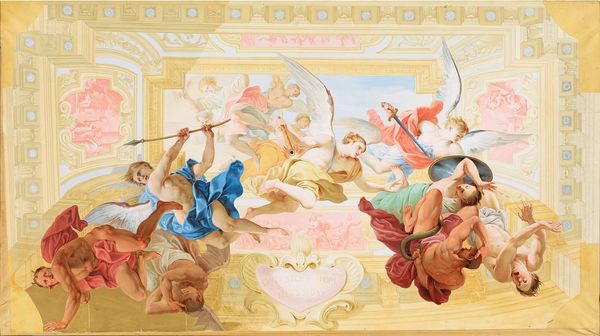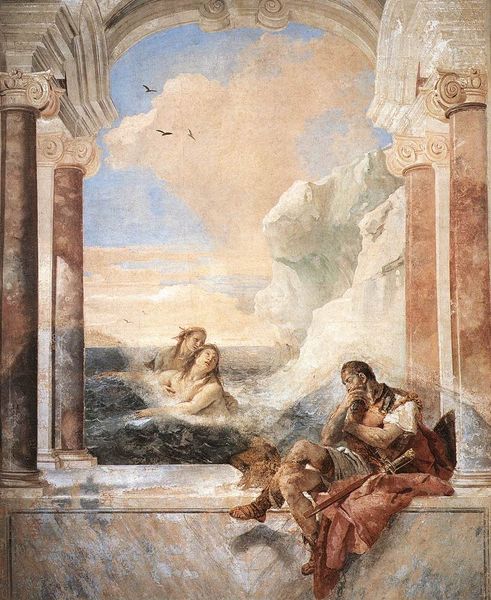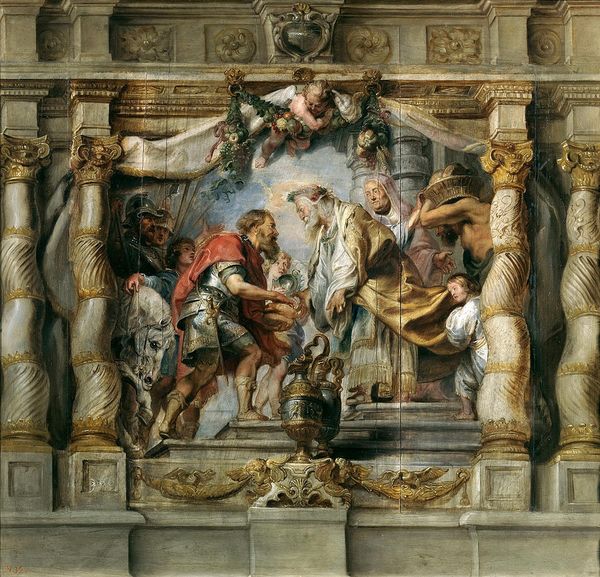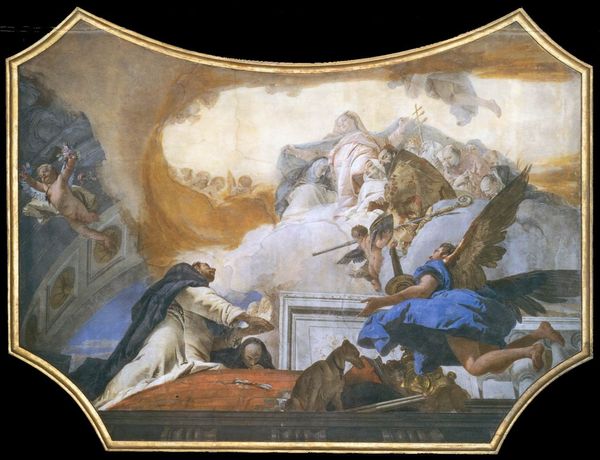
painting, fresco
#
portrait
#
allegory
#
baroque
#
painting
#
sculpture
#
fresco
#
roman-mythology
#
building art
#
underpainting
#
group-portraits
#
mythology
#
history-painting
#
academic-art
#
italian-renaissance
Dimensions: 700 x 350 cm
Copyright: Public domain
Curator: Looking at Giovanni Battista Tiepolo's fresco, "The Sacrifice of Iphigenia," painted around 1757, one can immediately note how its materials would affect the context. Being a fresco, its permanence is practically ensured as it is integrated into the very architecture surrounding us. Editor: Oh, the drama! It's all very theatrical, isn’t it? All those billowing robes and agonized expressions. I’m immediately drawn to Iphigenia herself; there’s such a poignant mixture of dread and resignation in her face. Curator: Indeed! It embodies many academic techniques of the Italian Renaissance while working well as building art! We're presented with this layered display of architectural structure, both actual and illusionary. Notice how Tiepolo integrated the depicted columns and painted sky to enhance the grandeur and make our consumption of its allegorical theme digestible. Editor: And the contrast! The stark white of the altar against the smoky blues of the sky, then the little cupid and stag floating in on a cloud... There's such a strong sense of… divine intervention, even. Like a deus ex machina painted right onto the ceiling. That executioner holding the axe, a real human element. Is that contrast the baroque side of the style showing? Curator: It certainly does play a large part. By examining it from an academic point of view, we understand that these artistic approaches and the fresco medium served specific socio-political roles at the time. Frescos provided a long-lasting art investment, while allowing artists to incorporate moral themes in an elevated way! The themes from roman-mythology offer a familiar cultural language. Editor: Absolutely. The very fact that it is up high and monumental makes it almost imposing! Imagine viewing such a historical piece with that intent in mind; it provides such weight to Iphigenia's fate, both divine and human. I wonder how visitors upon its debut viewed her sacrifice. I do appreciate this reminder to never underestimate the power of large art. Curator: Precisely, viewing art in terms of function, be it for social cohesion, decoration, or transmitting complex mythological narratives, enables us to look past simply aesthetics. Tiepolo, a brilliant artist with keen foresight! Editor: To truly let art wash over and inform one is always an enlightening thing to remember!
Comments
No comments
Be the first to comment and join the conversation on the ultimate creative platform.
